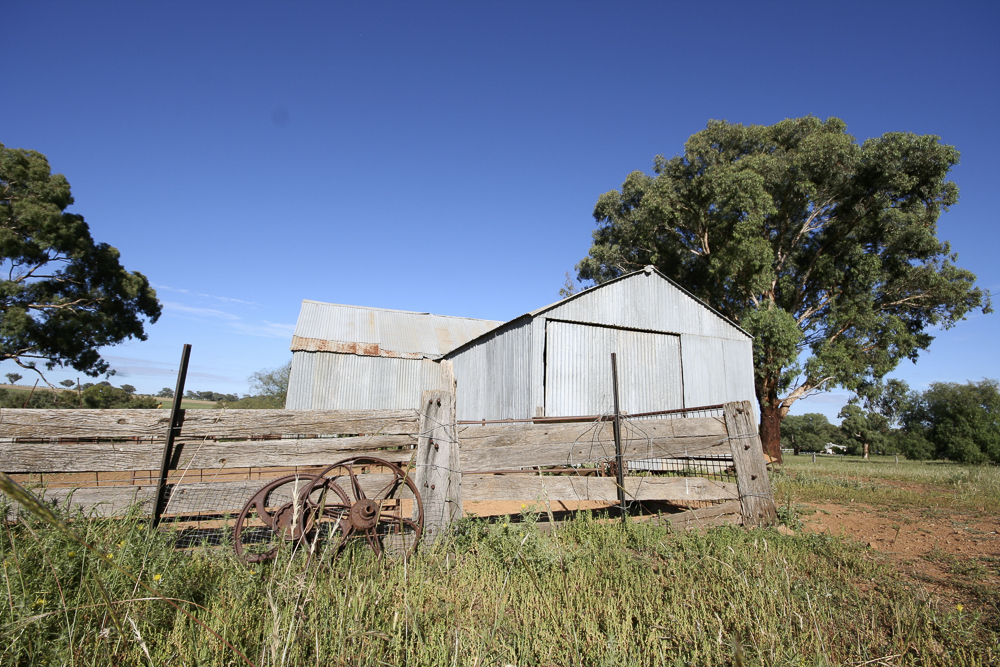From this section, you can download farm safety resources and practical guidelines to get started with a safety plan for your farm.
THESE RESOURCES ARE FREE TO DOWNLOAD AND USE.
Work health and safety
Work Health and Safety Introduction – introduces the key principals of farm safety.
Work Health and Safety Policy and Plan – provided to help us all manage health and safety within a business.
Safety Consultation with Workers – assists to regularly reports hazards, identifies safety training needs and issues identified by workers.
Hazard Checklists – provides help to find the common safety hazards for all types of farms and a safety action plan for making the farm safer.
- Tractor Checklist
- Irrigation Pumps and Motors Checklist
- Machinery Checklist
- Vehicle Checklist
- Motorbikes, Quads and Side By Side Vehicles Checklist
- Workshop Checklist
- Chemicals, Fertilisers and Pesticides Checklist
- Anhydrous Ammonia Checklist
- Farm Infrastructure Checklist
- Field and Paddock Checklist
- Farm Equipment Checklist
- Training and Induction Checklist
- Emergency and Preparedness Checklist
- Injury Management and Return to Work Checklist
Commodity Specific Checklists
- Cotton Picking Checklist
- Cattle Yard Checklist
- Shearing Shed Checklist
- Packing Shed Checklist
- Orchard Operations Checklist
- Cherry Picker Checklist
- Aquaculture Processing Shed Checklist
- Aquaculture Pond and Aerator Checklist
- Aquaculture Feed Storage and Movement Checklist
- Dairy Specific Farm Safety Starter Kit
Work Health and Safety Action Plan
Training Register – help to keep records of your worker’s training.
Injury Register – this will help you keep records of injury, learn from injuries that occur and put in place improvements to prevent them happening again.
Fatigue Management – all farms must have fatigue management within their safety plan.
Farm Safety Guides – there are many safety guides to help you find the right solutions to just about all the common safety risks on farms. Have a look at all the headings, these are useful to find solutions to common hazards and are industry endorsed.
- Safe Tractor Operation
- Safe Use of Quads and Side by Side Vehicles on Australian Farms
- Safety in the Farm Workshop
- Farm Machinery Guarding
- Grain Handling Safety
- Guarding Grain Augers
- Child Safety on Farms
- Ergonomics and Manual Handling on Farms
- Horses on Farms
- Organic Farm Dusts
- Farm Chemicals
- Firearms Safety
- Heat Stress
- Sun Safety
- Managing the Pressures of Farming
Commodity Specific Guides
Safety induction
Safety Induction Templates – these provide guidelines and videos for the safety induction for workers and contractors on the farm.
Mobile Induction App
- Farm Safety Induction (Note: you will be directed to Farmsafe Australia Website)
Worker Induction
- Safety Induction for Farm Worker
- Safety Induction for Farm Worker – Grain Harvesting
- Safety Induction for Farm Worker – Cotton
- Safety Induction for Farm Worker – Beef Cattle
- Safety Induction for Farm Worker – Sheep and Wool
- Safety Induction for Farm Worker – Horticulture
- Safety Induction for Farm Worker – Horticulture Picking
- Safety Induction for Farm Worker – Horticulture Packing Shed
- Safety Induction for Farm Worker – Sugar Cane
- Safety Induction for Farm Worker – Aquculture
Emergency planning
Regardless of controls put in place to prevent Work Health and Safety (WHS) incidents occurring, they can still happen. For example, a fire can start, someone may get electrocuted, trapped or injured by machinery or exposed to pesticides or chemicals. You must be prepared for any foreseeable incident.
A Farm Emergency Plan
The purpose of an emergency plan is to minimise the effects of a dangerous incident. When developing an emergency plan, consideration must be made of:
- the size and location of the farm
- the hazards on the farm
- the work being done, and
- the number of workers and other persons living on the farm.
Content of Emergency Plans
An Emergency Plan should include:
- Emergency procedures that include:
- an effective response to an emergency evacuation procedures
- notification procedures to advise emergency services
- medical treatment and assistance
- communication procedures between the person coordinating the emergency response and all persons at the workplace
- Testing emergency procedures and how often this will be done
- How workers and contractors will be provided with information, training and instruction about implementing the emergency procedures
An Emergency Plan template can be downloaded following this hyperlink.
Farm safety records
Keeping records of farm safety management is important. The following documents will download MS Word templates to keep Farm Safety Action and other WHS records on your farm
- Pesticide, Fuel and Chemical Storage and Records – (Includes Chemical Register and Hazardous Chemical Manifest)
- Asbestos Register
- Confined Space Entry Permit
- Machinery Maintenance Register
- Fire Extinguisher Maintenance Records
- First Aid Kit Inspection Records
- RCD and Electrical Appliance Inspection and Testing Records
Training resources
Pre-Start Safety Induction for Entry Level Farm Workers
This program provides an introduction to farm health and safety for young and inexperienced farm workers.
It can be delivered by organisations such as labour hire companies and training organisations who have a practical knowledge of farming, WHS and have a Certificate IV in Assessment and Training. Topics include:
- Workers WHS responsibilities
- Communicating safety in the workplace
- Basic risk management principles identifying hazards and risk
- Common hazards on Australian farms and their control
- Farm emergencies and emergency procedures
- Reporting injury and near miss incidents, and
- Where to get WHS information
MFS – Managing Farm Safety
The MFS – Managing Farm Safety training program was developed by AgHealth Australia has been delivered Australia wide by accredited instructors within the Farmsafe Australia network.
Resources accompanying the Managing Farm Safety training program are available in the “Farmer Resources’ section. Resources include checklists, inductions and safety guides for farmers and farm managers to manage safety on their farms.
